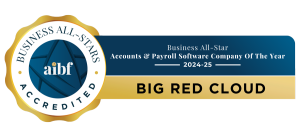Cash flow is the lifeblood of business and it’s especially important for small businesses who may not have the cash reserves of a large corporate. Making sure your business gets paid for provision of goods or services is paramount. After all starting a business is generally intended to be a profitable venture. It’s hard to plan for every eventuality in life. The last thing you want is to see your business’ liquidity destroyed by one or two unforeseen bills, especially if your products are actually selling. These 3 steps should help improve your cash flow.
1. Incentives
It is well documented about how incentives can help improve your cash flow. Offering percentage discounts off your invoice for early payment is nothing new. In addition other incentives such as an extended period of warranty or extra units included free in the next delivery could also be a tactic your business can use. Bear in mind though that these incentives are likely to impact profit margins. It wouldn’t make sense to improve cash flow at the cost of your profitability. If the impact on margins can be sustained and cash flow needs to be improved this is a tried and trusted method.
2. Timing
Businesses want to get their hands on their revenue as quickly as they possibly can. Therefore the number of days that pass before a client is invoiced following the completion of work is sunk time. If an invoice is not received, do you think a client is going to actively look for it and pay you too? If it takes your business a week to send the details to your most recent customer that week is time where the likelihood of payment is very very low. Organise your invoicing to be completed promptly after each job is completed. This could also play into a recency bias in the customer’s head. They may be inclined to pay up quickly if they are reminded to do so immediately after your work for them is done or their order has arrived, especially if they are really happy with the standard of your product and/or service. If it is left too long to provide them with payment details it may fall down their ever expanding lists of things to do.
3. Payment Processing
Another way to improve your cash flow is by accepting every type of payment possible. In today’s day and age there are ever increasing ways for people to pay. Simply accepting cash or cheques didn’t cut it 5 years ago so they’re not going to cut it today. Cash transactions have been in steady decline over the last number of years. Make sure that you accept credit and debit cards as well as other alternative methods of payment such as Paypal, especially if your business is web based. Your bread and butter is to accept electronic bank transfers. The last thing you want to happen is to have invoiced your client and for them to be ready to pay you, but they can’t because you don’t accept a common payment method. This may even be a deal breaker for return business if there is a major hassle in finalizing the transaction. Make sure your payment processing is up to date, particularly with the introduction of SEPA, and improve your cash flow.
–




